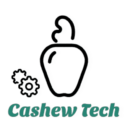Cashew husk i.e. cashew testa is the outermost layer of the cashew fruit. It is light in color and has a rough texture. Cashew husk i.e. cashew testa is used to make textiles and other products. They are also used as animal feed, insulation, and as a fuel source for cooking or heating.
Cashew testa is the thin, membranous outer layer of the cashew nut. It is a by-product of the cashew trade. Cashew testa can be used as a substitute for animal skins in some cases, such as in gloves and shoes.
This section will discuss the uses and applications of cashew testa in different industries, as well as its potential future applications.
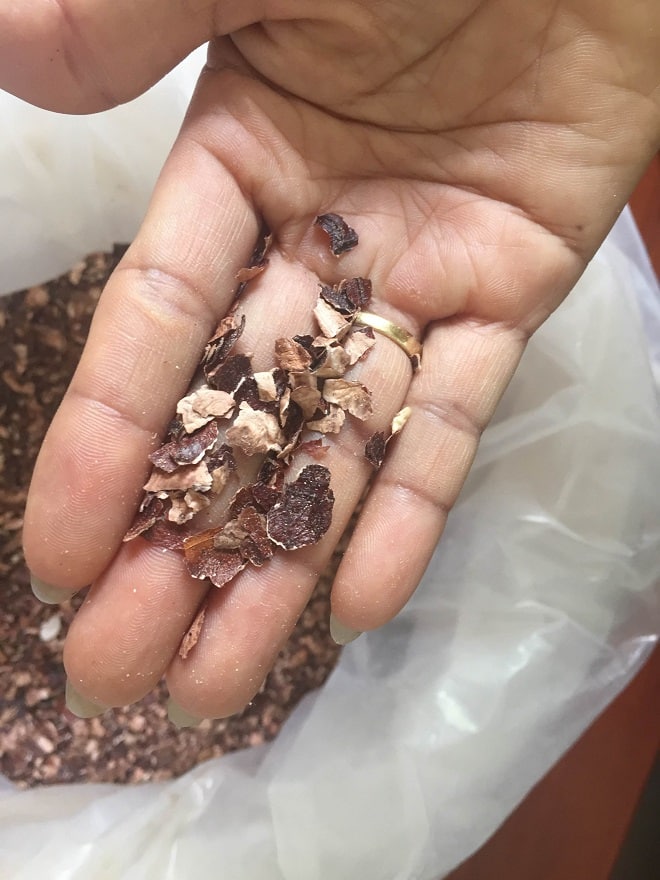
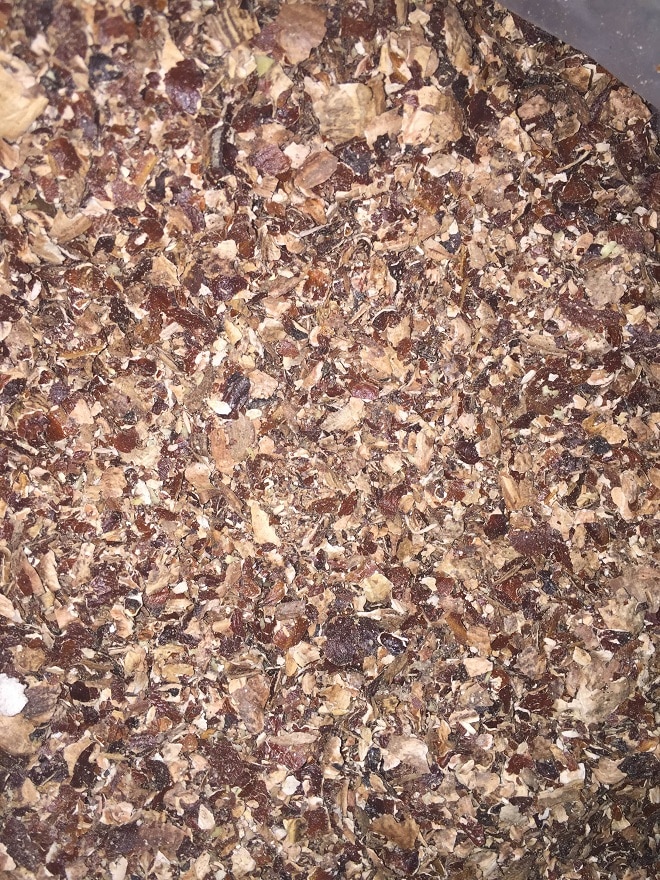
Various methods are used for the extraction of tannins from cashew husk. Cashew husk is the outer cover of the cashew kernel, which is also edible. The husk contains high concentrations of tannins. Some of these tannins have potential applications as re-tanning agents, especially in groundnuts. These tannins are also believed to be effective in the tanning of leather.
The method involves the comminution of heated cashew nut shells in an organic solvent. The liquid phase of the mixture is then separated from the solids. This liquid is pumped into a hydraulic press and pressed to a pressure of about 175 F. – 250 F. The resultant cake contains 2% to 15% by weight of cashew nut shell liquid.
The cashew nut shell liquid is then distilled off under reduced pressure. The resulting extract contains compounds with names such as MORTIMER T. HARVEY. These compounds were thought to inhibit tannin-protein interaction.
In a related method, shell fragments of partially liquid-depleted cashew nuts may be separated. The fragments are of various sizes and are either manually crushed or placed in a pressure unit. Depending on the pressure applied, the contents of the shell fragments may be as low as 18% or as high as 22% of the total weight of the shell fragments.
The residue of cashew nut shell liquid may also be present in the shell fragments. The residual liquid may be in the form of a compound that can be dissolved in a solvent for cashew nut shell liquid. The compound can also be separated from the filtrate. The filtrate is then evaporated to remove the water soluble components of the liquid phase. This filtrate is then mixed with water. The resultant mixture may be subjected to boiling for at least 120 minutes.
The method may also be used to treat shells obtained after cold breaking. These shells may be subjected to hydrolysis in sulphuric acid. The resultant mixture is then mixed with a solvent for cashew nut liquid. The mixture may be heated to a boiling point of the solvent. The mixture is then filtered and the hydrolyzed mass is neutralized.
Type: cashew husk (big size)
Specification
– Size : 5 – 10 mm
– Moisture : 15% max
– Impurity: 1% max
– Dust : 5% max
– Ash : 2% max
– Foreign matter : 0.5% max
– Admixture : 1%
– Packing : in 25 – 30kgs PP bag or jumbo bag, 500kg/bag or as buyer’s request
Type: cashew husk (small size)
Specification
– Size : 1 – 3 mm
– Moisture : 10% max
– Dust : 5% max
– Ash : 2% max
– Foreign matter : 0.5% max
– Packing : in 25 – 30kgs PP bag or jumbo bag, 500kg/bag or as buyer’s request
Among the most important renewable fuels today is cashew nut shell waste. Agro-industrial residues such as shell wastes have high porosity which increases air flow into the specimen and increases combustion. They are easily stored and transported. A briquette made from shell wastes has high heating value and calorific value.
Raw CNS wastes contain toxic hydrocarbons that have to be removed during carbonization. Then, they are densified and processed into solid briquettes. The briquettes have various elemental compositions. They have density, moisture content, compressive strength, and heating value. They have been tested against firewood charcoal. These briquettes are considered as a promising renewable biofuel.
The process of briquette production involves mixing the raw CNS with cassava starch. The mixing ratio is 5:1 w/w. The mixture is then pressed in a 25 mm cylinder mold. The compressive strength of the briquettes is determined by using a Universal Testing Machine. The press cake is then ground into 0.5 mm grains. The briquettes are then compressed by adding an additional adhesive.
The calorific value of the briquettes is determined by the amount of cassava starch as binder. The briquettes produced by mixing CNS powder with cassava starch have a calorific value of 28.3 MJ/kg. When the binder content was increased to 30%, the calorific value increased to 30.5 MJ/kg. The calorific value of the briquettes was determined by using the ASTM D388 standard classification. The heating value of the briquettes was determined using the standard water boiling test. The briquettes produced by using the above process were found to have better quality.
Cashew nut shell wastes are a promising alternative fuel for cooking in rural areas. They can be used as a substitute to wood fuel. The briquettes produced from CNS wastes are suitable for biofuel and have the potential to be used in established and emerging countries. Moreover, the supply chain of these wastes is promising.
Various studies have been conducted to analyze the calorific value of briquettes made from CNS wastes. The results have been found to be similar to those of wood biomass. The briquettes made from shell wastes have a calorific value on par with sub-bituminous coal.
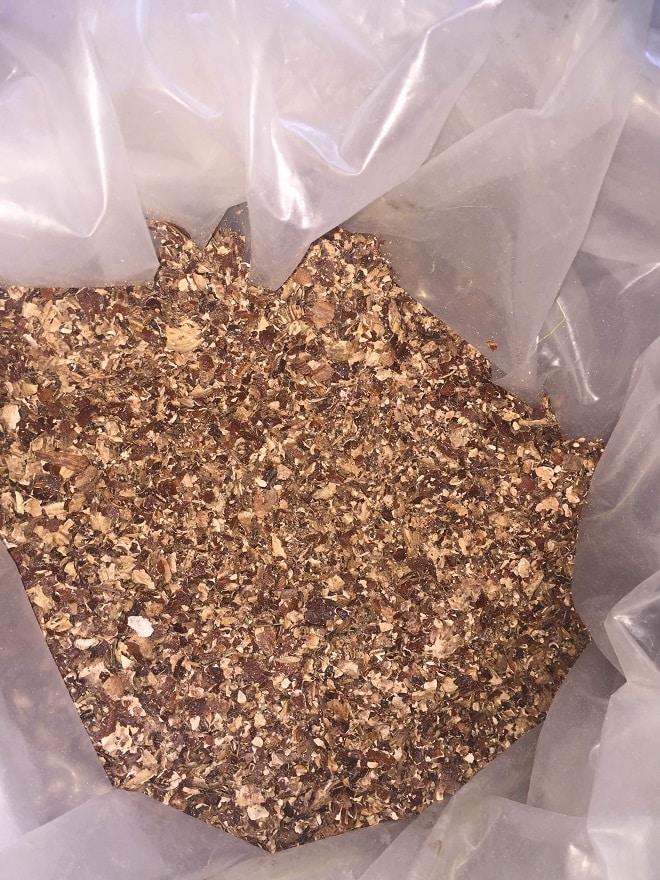
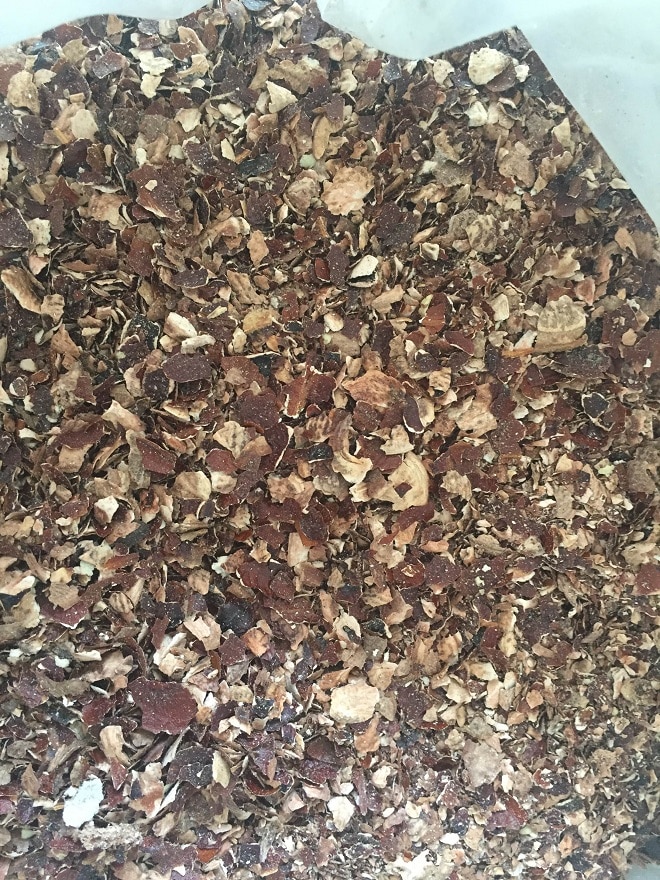
Various processes can be used to extract tannins from cashew husk. Some methods are considered more environmentally friendly. Others may be used in commercial applications.
Tannings are naturally occurring phenolic compounds. They are divided into hydrolysable and condensed tannins. They are also known to have therapeutic anti-oxidant properties. In the past, they were used to convert animal hides to leather. They are now being studied as re-tanning agents. They have also been shown to have the ability to remove suspended solids from water effluents. These compounds are useful in the chemical industry because they are widely available. They are also beneficial to the food industry since they have anti-oxidant properties.
Thermogravimetric analysis showed that tannins in cashew husks have a thermal property. However, they lost up to 10% of their weight by 200 degC. In addition, FT-IR spectroscopy showed bands that indicated the presence of OH bonds. They also revealed the presence of PF and HT.
In addition, tannins were extracted in concentrated solutions of honey and citric acid. In addition, phytochemical screening showed the presence of flavonoids and alkaloids. Among the flavonoids, epigallocatechin was identified with increasing temperature. They were also shown to have the ability to chelate metal ions.
Thermogravimetric analysis of the testa showed that the tannins contained a condensed form, as they were separated as catechin, quercetin, delphinidin, HT, and PF. The amount of catechins present in the cashew husks was 32%. The extraction yield was higher with cashew testa.
Cashew husks contain a mixture of 5-7 percent tannins. They have potential uses in re-tanning, and in the chemical industry. They are also used to produce a fast curing resin.
In addition, the cashew nut kernel testa contains an important bioactive compound. This compound helps to preserve the roasted flavors for a longer time. In addition, it has potential applications in the food industry as a source of antioxidants. It also has the ability to absorb saliva. The testa has also been reported to be useful in the nutraceutical industry. It is also interesting to note that the testa on cashews is amenable to flavor infusion.
Cashew husk suppliers are mainly located in India, Vietnam and Brazil. The price of cashew husks is determined by the quality and quantity of the produce.. Vietnam and India has many cashew husk aka cashew testa suppliers. Many traders export cashew husk from Vietnam to India. Generally the better quality husk is exported to India and the powder part is export to South Korea where it is used for animal feed.
Cashew testa is packed in jute bags, fumigated and then shipped.
HS Code: 14049090 (Tanning Purpose)
HS CODE: 12130000
Please check with your CHA (Custom Clearing Agents) about which one will be applicable to you.
Price normally fluctuates between INR 10 to INR 15 .. depending on the Grade and Quality, but more importantly sea freight, which has a big bearing on final price. Rs. 1,000 – Rs. 1,500 Per Tons
Several cashew growing countries have benefited from the beneficial effect of weaver ants as biocontrol agents of cashew insect pests. The aim of this study was to assess the effectiveness of weaver ants in cashew orchards in Vietnam. In a series of field experiments, weaver ants were introduced into the cashew orchards in Binh Phuc, Dong Nai, and Ba Ria Vung Tau provinces.
Weaver ants were effective in reducing damage caused by fruit-nut borers. A similar effect was found in controlling leaf rollers and mosquito bugs. However, fruit-nut borers were significantly lower on trees with weaver ants. Interestingly, weaver ants were similar to insecticides used for controlling fruit borers.
A mixture of cashew nut shell liquid and castor oil is a highly effective larvicide against Aedes aegypti mosquitoes. The combination does not affect reproductive performance or DNA integrity. In addition, TiO2 loaded cashew nut shell activated carbon has photocatalytic activity on MB dyes.
The study also identified two natural plasticizers from cardanol, a byproduct of cashew nut processing. Both cardanol derivatives, diethyl azodicarboxylate and dimethyl azodicarboxylate, were synthesized and characterized by 1HNMR.
The morphological, chemical, and physicochemical characteristics of seven species of black Aspergilli were also determined. All species except Aspergillus aculeatus produced secalonic acids, pyranonigrin A, and aurasperone. They were assayed for mycotoxins.
An analysis of the diversity of secondary metabolites produced by Aspergillus section Nigri showed that the fungi produce 45 metabolites. All species showed some level of contamination. However, Aspergillus aculeatus was not found to produce any aflatoxins.
The presence of weaver ants also resulted in higher raw nut yield. In comparison with the control, raw nut yield from trees with weaver ants was 2.9% higher and 14% higher in kernel yield. However, aphids did not become a significant pest on trees with weaver ants.
These findings suggest that weaver ants have a significant effect on the cashew orchard in Vietnam. However, the effectiveness of weaver ants in controlling cashew insect pests should be further investigated. In addition, integrated pest management with weaver ants is an important component.
The use of cashew nut shell liquid and/or castor oil in combination with the fungus Leuconostoc mesenteroides NRRL B512F in cashew apple juice produces a dextransucrase enzyme, which synthesizes prebiotic oligosaccharides.
Cashew testa is the cashew nut's thin, membranous outer layer. It is a byproduct of the cashew industry. In some cases, such as gloves and shoes, cashew testa can be used in place of animal skins.
Cashew shells are the outer shell of the cashew nut. Cashew shells are not edible, but they can be used for some other purposes.
The shell is made up of two parts. The outer part is called the pericarp and the inner part is called the endocarp. The pericarp has a light-brown color with a slightly rough texture and it's covered in tiny hairs. The endocarp has an oily, waxy texture and it's brown in color with white patches on it.
Important Terms: Husk, Cashew husk, cashew husk packaging, cashew husk products, fresh cashew husk, cashew husk, husk supplier, husk quote, husk mobile, husk email, husk, quote cashew husk, nut husk cashew, husk, raw cashew nuts, vietnam cashew, cashew nut hust, cashew husk, cashew nut, husk, skin, metric tons, import, supplier, husk video,
- cashew husk uses
- cashew husk hs code
- cashew husk price
- cashew husk powder
- cashew husk price per kg
- cashew husk powder uses
- cashew husk oil
- cashew husk buyers in india

